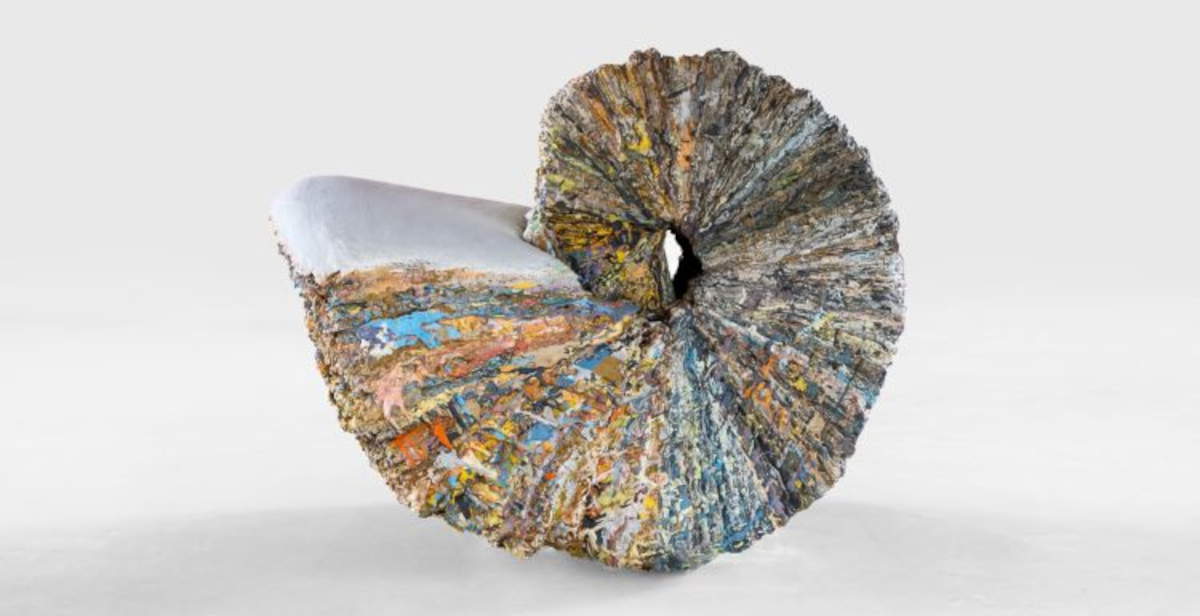From Oct. 3, 2025 to Jan. 24, 2026, Atipografia, a contemporary art space in Arzignano (Vicenza), presents Matermània/Matermanìa, a group exhibition curated by Elena Dal Molin and Marco Mioli that brings together works by Marta Allegri, Mats Bergquist, Gregorio Botta, Diego Soldà, Zeljana Vidovic and Stefano Mario Zatti. The exhibition inaugurates a new cycle of three exhibitions dedicated to the exploration of the three-dimensionality of the human being and focuses on motherhood as a founding theme, investigated in its most intimate implications and collective scope.
The project stems from a path of shared reflection among artists, curators and friends of Atipografia, developed through a series of meetings and debates hosted at the gallery. The choice to start with the theme of motherhood responds to a need to analyze the sacred as an essential dimension of art, in a present that tends to remove its presence. Motherhood is approached as an expressive force capable of opening gaps in individual intimacy and at the same time building a sense of belonging and collectivity. The title of the exhibition recalls the Grotta di Matermania on Capri, an ancient sacred place dedicated to Cybele, the Magna Mater, a primordial symbol of generative power and creative chaos. The evocation of the archaic space underscores the intention to connect contemporary works to a universal and ancestral imagery in which motherhood is at the origin of the life cycle and creation.

“Perhaps without realizing it we live in an increasingly two-dimensional world, where the cancellation of superstition has ended up erasing even ecstasy, glory, and the sense of the sacred. The first act of resistance is precisely in giving birth, motherhood: the first collective act,” Elena Dal Molin argues.
“Birth is an act that transcends the individual: in motherhood the self and the we live, it is the intimate event from which bonds, societies, cosmogonies are born,” suggests Marco Mioli, co-curator of the exhibition.
The exhibition opens with a new production by Gregorio Botta (Naples, 1953), an artist who investigates the fragility of existence through suspended and rarefied structures. In Matermania, a large wax frame houses a rectangular alabaster element inside, while a glass shelf supports a wax cup containing milk. The dialogue between the materials, wax and alabaster, wax and milk, constructs a secular annunciation, stripped of image, that welcomes, contains and gives.

Marta Allegri (Bologna, 1961) participates with three works, including Eva (1999), a work that reflects on childbirth as a symbol of all birth. The generative act here becomes a paradigm of the very origin of life, opening a discourse on the female body as a place of transformation and creation.
Diego Soldà (Arzignano, 1981) presents Madre (2020-2023), a sculpture made over several years through a process of layering tempera of different colors. The form, similar to a spiral shell, comes from a daily and patient painting practice and gives body to a three-dimensional dimension in which time and gesture settle into the material.
Zeljana Vidovic (Lussin Piccolo, 1982) offers Amare (2023-2024), a series of ceramics born from a personal experience that investigates motherhood as an inner metamorphosis and as a possibility of transformation through the creative act. The work explores the link between artistic gesture and vital process, suggesting a continuity between biological and aesthetic creation.


Among Stefano Mario Zatti’s works, Efrem emerges, a project initiated in 2017, the year of his son’s birth. At each full moon, the artist traces the outline of the child with colored crayons, recording his growth as in a cyclical ritual. The work transforms time into visual matter and reflects on the relationship between parenthood, memory and transformation.
The work Venus by Mats Bergquist (Stockholm, 1960), made with the encaustic technique, closes the itinerary. The form, suspended between fullness and emptiness, addresses the theme of birth and investigates presence through silent monochrome surfaces. Motherhood emerges as a foundational and original event, capable of evoking absence and presence at the same time.
Through complex and symbolic materials-wax, alabaster, metal, clay, paper-the works of the six artists build a dialogue between matter and spirituality and weave different narratives that converge on the idea of motherhood as an event capable of shaping individual and collective life. Art is presented here as a gesture capable of generating shared reflection and touching the most intimate dimensions of human experience. The works dot the exhibition space with a light materiality, as potential presences that aspire to elevation and are configured as acts of poetic resistance in the face of the exaltation of the individual. The exhibition is part of Atipografia’s cultural program, which aims to foster a dialogue between contemporary artistic practices and social context, relating aesthetic research to the tensions of the present.
 |
| Motherhood as a collective experience: in Arzignano (Vicenza) the exhibition Matermània/Matermanìa |
Warning: the translation into English of the original Italian article was created using automatic tools. We undertake to review all articles, but we do not guarantee the total absence of inaccuracies in the translation due to the program. You can find the original by clicking on the ITA button. If you find any mistake,please contact us.